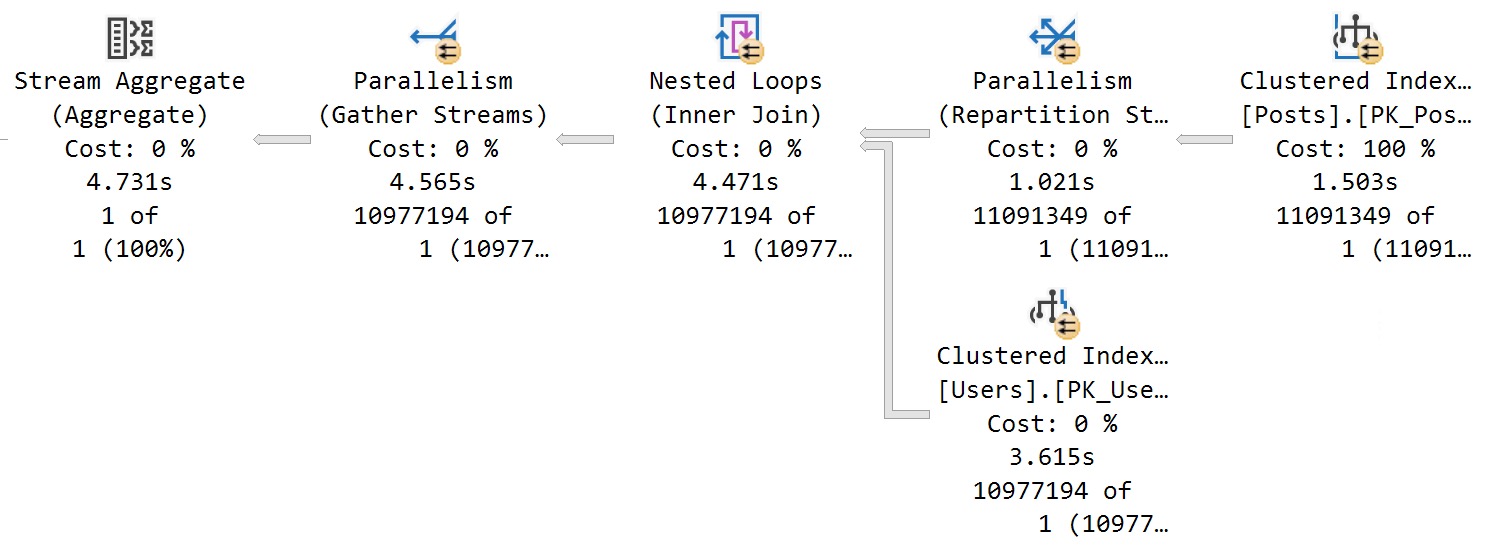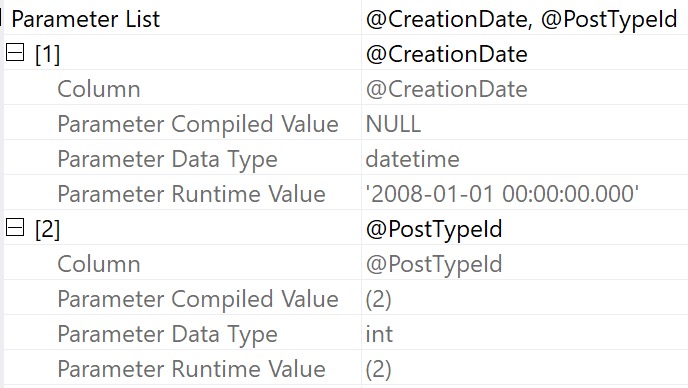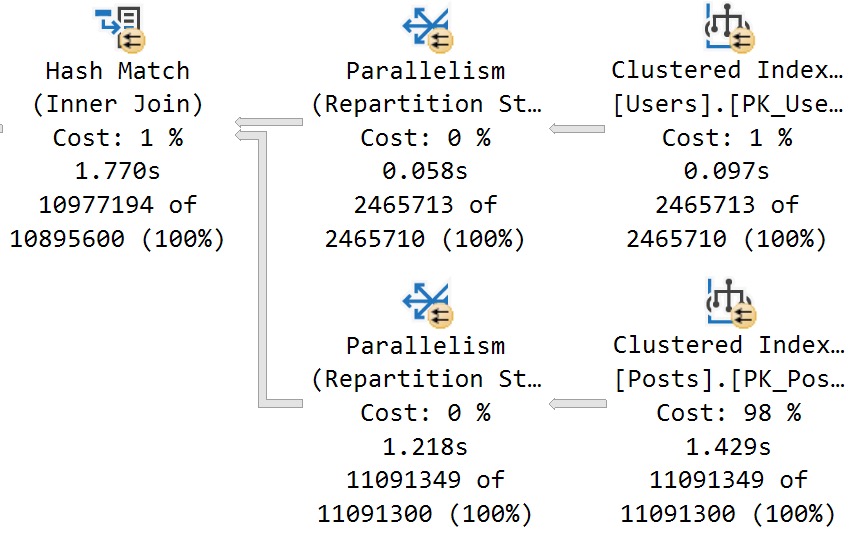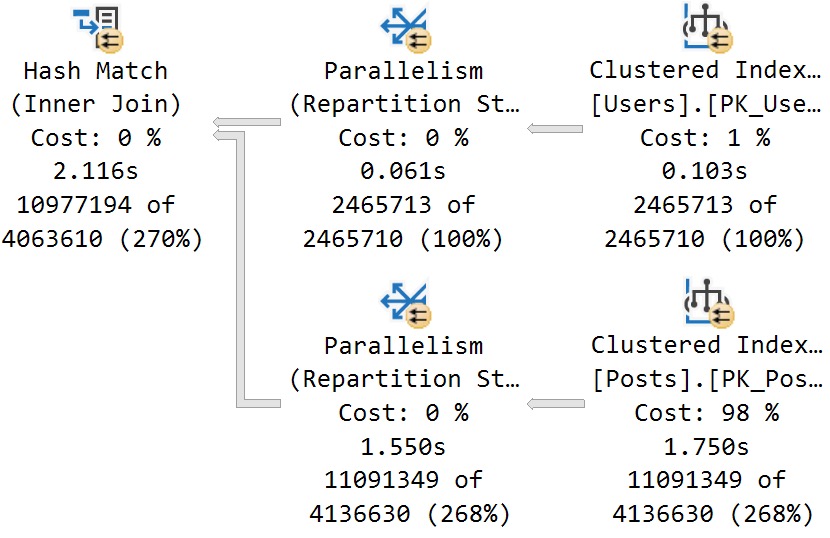Jerked
Everyone thinks they’ve outsmarted the optimizer. All the time.
Like it’s a bumbling video game security guard that walks in the same circle and can’t see you if you just hold real still.
In reality, the optimizer is more like a dutiful parent playing along with your childish ruses.
One thing I see developers do quite a bit is try to “fix” a parameter in an IF branch.
Maybe it’s to protect against bad search values, but more often it’s to nix NULLs.
I know that the stored procedure I’m showing only has one branch in it where a query is executed, and the series is supposed to be about if branching with multiple queries.
I’m only doing that to simplify the point of this post, which is that “fixing” supplied values does not correct performance and cardinality estimation issues with queries in IF branches.
Sometimes that’s easier to demonstrate without additional noise.
The Thing
Here’s close to what I normally see someone trying:
CREATE OR ALTER PROCEDURE
dbo.counter_if
(
@PostTypeId int = NULL,
@CreationDate datetime = NULL
)
AS
SET NOCOUNT, XACT_ABORT ON;
BEGIN
IF @CreationDate IS NULL
BEGIN
SET @CreationDate = '20080101';
END;
IF @PostTypeId IS NOT NULL
BEGIN
SELECT
c = COUNT_BIG(*)
FROM dbo.Posts AS p
JOIN dbo.Users AS u
ON p.OwnerUserId = u.Id
WHERE p.PostTypeId = @PostTypeId
AND p.CreationDate >= @CreationDate;
END;
END;
GO
The problem here is that by the time we hit the point where @CreationDate gets set to another value, we’ve already got a query plan.
You might get a search for the value you assign there, but the plan gets optimized for NULL.
Puddings
If you execute the procedure like so, and get the query plan for it, here’s what happens:
EXEC dbo.counter_if
@PostTypeId = 2;

We get a real bad cardinality estimate there, and I’ll show you that it’s because of the NULL we passed in, even though we set it to 2008-1-01-01 later.

Digging into the operator properties of the select, here’s what the execution plan shows us about the parameters:
- @PostTypeId is compiled and executed with 2 for both
- @CreationDate is compiled with NULL, but executed with 2008-01-01 00:00:00.000
Different World
If we clear out the procedure cache — and I’m allowed to do that because I am a doctor (in Minecraft) — and re-run the procedure with 2008-01-01, we get accurate cardinality estimation.
EXEC dbo.counter_if
@PostTypeId = 2,
@CreationDate = '20080101';

We no longer get a one row estimate. Look at us. Look at how smart we are.
I’m starting to understand why so many people hate NULLs.
But Is It Null?
For brevity, I’m going to list out a bunch of similar patterns that also end up poorly:
SELECT
c = COUNT_BIG(*)
FROM dbo.Posts AS p
JOIN dbo.Users AS u
ON p.OwnerUserId = u.Id
WHERE p.PostTypeId = @PostTypeId
AND p.CreationDate >= ISNULL(@CreationDate, '20080101')
AND p.CreationDate >= COALESCE(@CreationDate, '20080101')
AND (p.CreationDate >= @CreationDate OR @CreationDate IS NULL)
AND p.CreationDate >= CASE WHEN @CreationDate IS NULL THEN p.CreationDate ELSE @CreationDate END
None of these patterns or similar permutations yield desirable results in most cases.
You may find an edge case where they’re acceptable, but most folks I end up talking to aren’t calling me because what they’ve done is working out well.
More or less, they all results in this estimate/plan:

See? You’re still not clever, and I still got your nose. Go play outside, slugger.
S Dot
Hopefully by now you can see why this technique doesn’t necessarily give you good results.
In tomorrow’s post, we’ll look at another anti-pattern I see a lot with local variables.
If you’re looking for working solutions, you’re gonna have to hang on until the end of the week.
That’s just how culminations work. They Culm and then they Inate.
Duh.
Thanks for reading!
Going Further
If this is the kind of SQL Server stuff you love learning about, you’ll love my training. I’m offering a 75% discount to my blog readers if you click from here. I’m also available for consulting if you just don’t have time for that and need to solve performance problems quickly.
Related Posts
- SQL Server 2022 Parameter Sensitive Plan Optimization: How PSP Can Help Some Queries With IF Branches
- SQL Server IF Branches And Query Performance Part 5: Does Dynamic SQL Work?
- SQL Server IF Branches And Query Performance Part 4: Do Stored Procedures Work?
- SQL Server IF Branches And Query Performance Part 3: Local Variables Still Suck
Excellent start to the article — it’s been ages since I did any query tuning but if there’s one thing I ever learned it’s that as soon as I think I’ve got one up on the optimiser, it’s time to step waaaaay back and figure out why I’m mistaken.
Any genuine bugs and problems I’ve read about have been on blog posts from the big names in SQL Server, and I know for a fact that I’m not nearly as smart as them and I’m not gonna be dealing with anything like the mad data horrors they’ve encountered on their latest consultancy gig 🙂
Heh, yeah, there are just way too many things to remember when you’re not doing the work all the time.